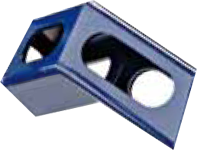Chromosome 9









Art and bioinformatics
Artists have always found inspiration in science. And art is singular in that it can make science more human by shedding light on the beauty and elegance of the tiny world we are made out of.
pace
DMRT3: gene involved in movement coordination. In some horses, this same gene plays a role in the animal’s ability to perform certain types of trots, what is known as the pace.
External links
Protein Spotlight : a gait on the wildside
Corresponding protein in UniProtKB/Swiss-Prot
anti-COVID19 target?
CTSL: gene coding for a protein that facilitates coronavirus SARS-CoV and SARS-CoV-2 infection via the cleavage of the coronavirus spike protein. CTSL is the target of potential anti-COVID19 drugs.
External links
Corresponding protein in UniProtKB/Swiss-Prot
repair
XPA : this gene is involved in DNA repair. The system, however, is not perfect. As a result, a few mistakes are kept and turn out to be indispensable for the evolution of the species.
nickel
TLR4: This gene may be involved in nickel allergies.
External links
Protein Spotlight : zips, necklaces and mobile telephones
Corresponding protein in UniProtKB/Swiss-Prot
une histoire de soutien
COL5A1: Gène codant pour un type de collagène, protéine abondante dans les os, la peau et les cartilages.
A, B, AB ou O ?
ABO: Gène impliqué dans la détermination de notre groupe sanguin – A, AB, B ou O.
a passage for water
AQP3: This gene codes for a protein – aquaporin – that acts as a channel for ferrying water molecules throughout our body.
External links
Prolune – snapshot: Aquaporin
Prolune - article: Aquaporins: «A Nobel Prize for the water ferries»
Prolune - play (PDF): «AquaWhat ?»
3D video (NIH resource) : Download movie 13.1M
Protein Spotlight: Liquid states
Corresponding protein in UniProtKB/Swiss-Prot
Internal links
Chromosome 7: AQP1
traiter la sclérose en plaques
IFNB1: Gène codant pour l’interféron béta, une protéine utilisée dans le traitement de la sclérose en plaques.
External links
Prolune - dossier : Protéine phare contre la sclérose en plaques
Corresponding protein in UniProtKB/Swiss-Prot
testicular architect
DMRT1: This gene could be involved in the development of testicles in many species – ranging from mammals to reptiles, including birds.
External links
Corresponding protein in UniProtKB/Swiss-Prot
